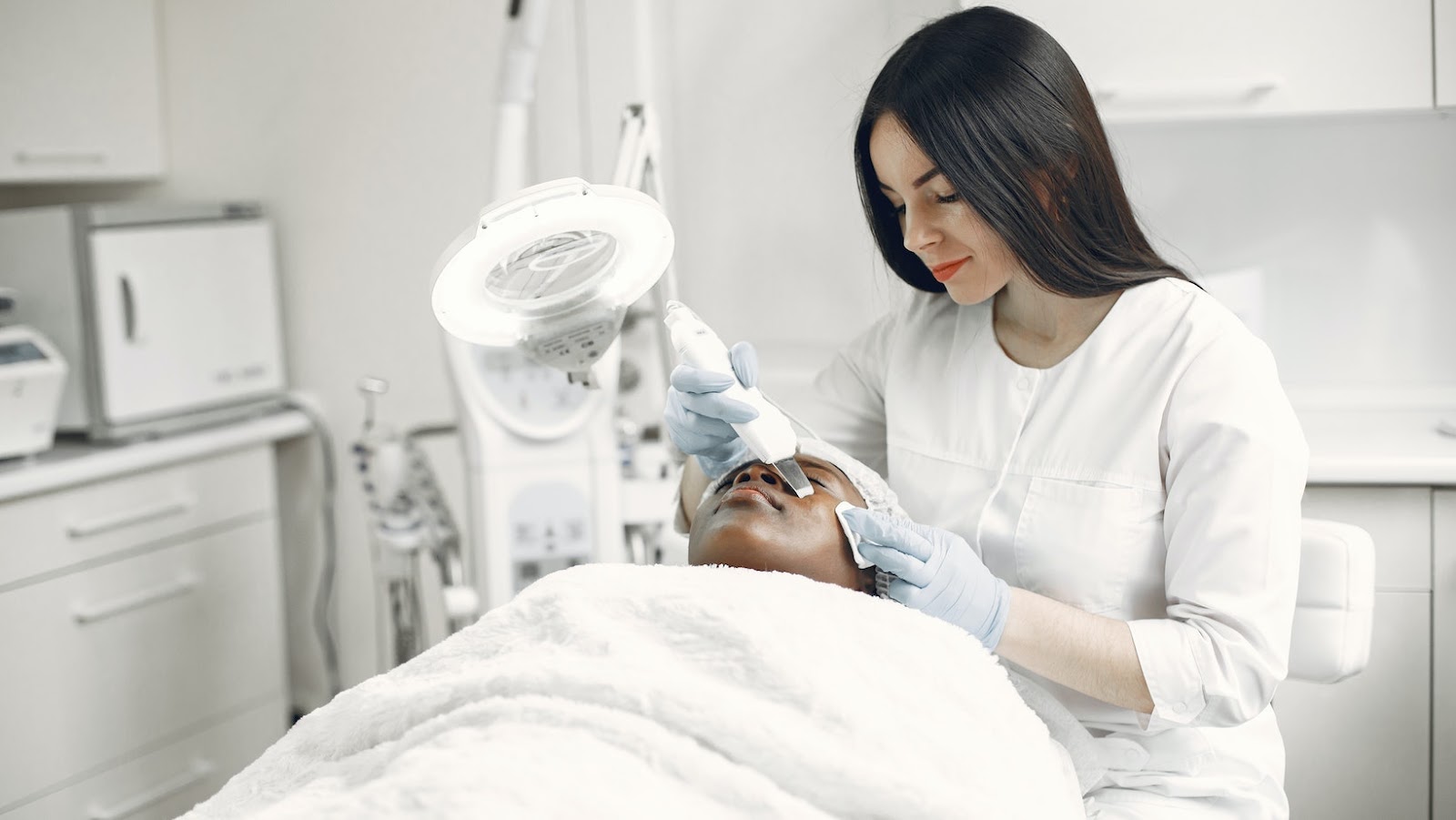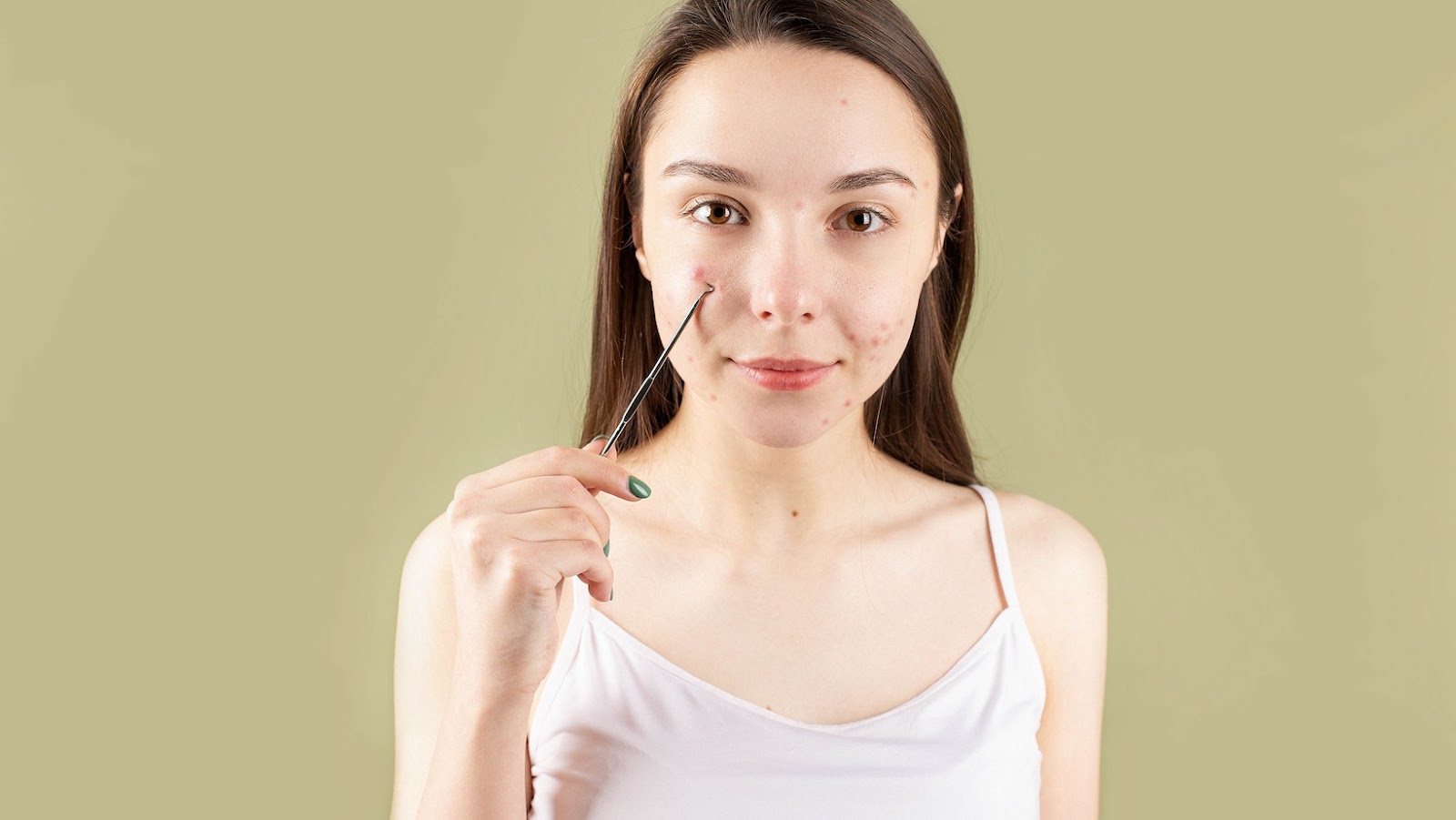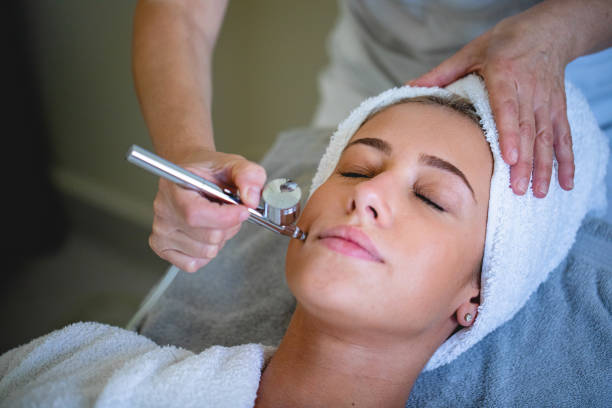Microdermabrasion is a popular non-surgical cosmetic procedure that can have beneficial effects on the skin. However, like any medical or cosmetic procedure, it can also have side effects. Some of the most common side effects of microdermabrasion include redness, sensitivity, and peeling of the skin.
To avoid these side effects, it is essential to follow your dermatologist’s instructions carefully. Usually, microdermabrasion treatments can be scheduled every 4 to 6 weeks, but the frequency may depend on your skin’s sensitivity level and your skin goals.
It is best to avoid exposure to the sun and wear a hat or sunscreen for a few days after microdermabrasion to protect your newly exposed skin. Also, avoid using exfoliating products or other harsh skincare products for at least 24 hours after the treatment. If you experience severe side effects such as persistent redness, swelling, pain, or infection, consult your dermatologist immediately.
Pro Tip: Be mindful of your skin’s sensitivity level and choose a qualified dermatologist to perform your microdermabrasion treatment.
Skin Irritation and Redness
Microdermabrasion is a popular cosmetic procedure that can help reduce the appearance of skin blemishes and wrinkles. However, one of the side effects of the procedure is skin irritation and redness. In this article, we will discuss how often you can get microdermabrasion and the potential side effects that come with it.
Causes of Skin Irritation and Redness
Microdermabrasion is an effective cosmetic procedure that helps to remove dead skin cells and improve skin texture. However, it is common to experience skin irritation and redness after the treatment.
Here are some causes of skin irritation and redness after microdermabrasion:
- Over-exfoliation: Microdermabrasion is essentially an intense exfoliation process, and if it is done too frequently or too aggressively, it can lead to skin irritation and redness.
- Sensitive skin: If you have naturally sensitive skin, you are more likely to experience skin irritation and redness after microdermabrasion.
- Allergic reactions: Some people may be allergic to the products used during the microdermabrasion treatment, which can cause skin irritation and redness.
- Skin infections: If you have a skin infection or open wound, microdermabrasion can exacerbate the condition.
To avoid skin irritation and redness, it is generally recommended to wait at least 1-2 weeks between microdermabrasion treatments.
Effects of Skin Irritation and Redness
Microdermabrasion is a popular cosmetic procedure that uses fine crystals or particles to exfoliate the skin, removing dead skin cells and promoting skin rejuvenation. However, as with any cosmetic procedure, there are some side effects to consider. Skin irritation and redness are among the most common side effects of microdermabrasion. This is because the procedure involves removing the outer layer of skin, which can leave the skin sensitive and inflamed.
To minimize skin irritation and redness, it’s important to follow the aftercare instructions provided by your skincare professional. These may include avoiding direct sunlight and wearing protective clothing, using a gentle cleanser and moisturizer, and avoiding harsh skincare products or exfoliators. It’s also important to note that the frequency of microdermabrasion treatments should be spaced out to give your skin time to heal and recover. Most skincare professionals recommend waiting 2-4 weeks between treatments to avoid over-exfoliation and further skin irritation.
Treatment for Skin Irritation and Redness
Microdermabrasion is a popular skin resurfacing treatment that can cause skin irritation and redness as a side effect. Luckily, there are several treatments to help soothe and reduce these symptoms.
- Apply a cold compress: Gently apply a cold compress to the affected area to help reduce swelling and inflammation.
- Use aloe vera: Known for its soothing properties, aloe vera can help reduce redness and irritation. Apply a thin layer of pure aloe vera gel to the affected area.
- Avoid harsh skincare products: To prevent further irritation, avoid using harsh skincare products or anything containing alcohol or retinoids.
- Limit sun exposure: Exposure to sunlight can make redness and inflammation worse. Use sunscreen and avoid sun exposure as much as possible.
If symptoms persist, consult a dermatologist. It is also recommended to wait for 1-2 weeks before getting another microdermabrasion treatment.
Dryness and Flakiness
Microdermabrasion is a popular cosmetic procedure that helps to reduce fine lines and wrinkles, exfoliate dead skin cells, and improve skin texture. While the procedure has some great benefits, it also has some minor side effects, the most common being dryness and flakiness. In this article, we’ll discuss how often you can get microdermabrasion, as well as the other potential side effects.

Causes of Dryness and Flakiness
Dryness and flakiness are common side effects of microdermabrasion treatments, and they can be caused by a variety of factors such as the frequency of the treatments, skin type, and the aftercare regime. One of the main causes of dryness and flakiness after microdermabrasion is excessive and frequent treatments. While the procedure does help to exfoliate the skin, overdoing it can lead to skin irritation and dryness.
Skin type also plays a significant role in the occurrence of dryness and flakiness. Individuals with dry and sensitive skin are more prone to experiencing these side effects of microdermabrasion. Failure to follow proper aftercare procedures can also lead to skin dryness after the treatment. It’s important to moisturize the skin regularly, avoid sun exposure, and use gentle skincare products.
To avoid or minimize the occurrence of dryness and flakiness, it’s recommended to get microdermabrasion treatments every 4-6 weeks depending on your skin type and condition. This will provide ample time for the skin to heal and prevent over-exfoliation.
Pro Tip: Consult your dermatologist or aesthetician before undergoing any cosmetic procedures to determine the best course of action for your skin type and condition.
Effects of Dryness and Flakiness
Microdermabrasion is a popular cosmetic procedure that exfoliates and rejuvenates the skin. However, it can cause dryness and flakiness of the skin if not done correctly or if done too frequently.
- Dryness: Microdermabrasion can strip the skin of its natural oils, leaving it dry and flaky if not moisturized properly. It can also cause sensitivity to other skincare products or irritate pre-existing skin conditions like eczema or rosacea.
- Flakiness: Microdermabrasion can also cause flakiness due to excessive exfoliation that can damage the skin’s moisture barrier, causing it to lose moisture and flake.
How often can you get microdermabrasion: It is not recommended to get microdermabrasion more than once a week as it can cause severe dryness and flakiness of the skin. However, the frequency may vary depending on the individual’s skin type and sensitivity.
Pro tip: It is crucial to follow proper aftercare routine and avoid harsh skincare products or excessive sun exposure after a microdermabrasion session to reduce the risk of skin dryness and flakiness.
Treatment for Dryness and Flakiness
Dryness and flakiness are common side effects of microdermabrasion treatment. However, you can take steps to reduce these symptoms and keep your skin looking healthy and radiant.
Here are some tips to overcome dryness and flakiness caused by microdermabrasion:
- Hydrate: Drinking plenty of water before and after the treatment can help keep your skin hydrated and minimize dryness.
- Moisturize: Applying a gentle moisturizer after the treatment can soothe dryness and reduce flakiness. Make sure to choose a moisturizer that is free of fragrances and harsh chemicals.
- Avoid Scrubbing: Avoid scrubbing or exfoliating your skin until your dryness and flakiness subside. This can cause further irritation to your skin.
- Limit the treatment frequency: Depending on your skin type, you should limit your microdermabrasion treatment frequency. For sensitive skin, once every three months is perfect whereas people with thick skin can get it done monthly.
By following these tips, you can enjoy the benefits of microdermabrasion without suffering from side effects such as dryness and flakiness.
Increase in Skin Sensitivity
After having a microdermabrasion treatment, one of the most common side effects experienced is increased skin sensitivity. This increased sensitivity can last for up to 24 hours after the procedure and can vary from person to person. It can range from mild to severe, depending on the individual. Understanding the side effects of microdermabrasion will help you determine how often you should get the treatment.
Causes of Increased Skin Sensitivity
Increased skin sensitivity is a common side effect of microdermabrasion – a skin resurfacing treatment that removes dead skin cells and stimulates collagen production. Although microdermabrasion can improve skin texture and tone, it can also cause skin irritation and discomfort.
Here are some causes of increased skin sensitivity after microdermabrasion:
- Over-exfoliation: Microdermabrasion deeply exfoliates the skin, which can cause a disruption in the skin barrier, leading to increased sensitivity.
- Dryness: Microdermabrasion can remove natural oils from the skin, leaving it dry and vulnerable to environmental irritants.
- Sun exposure: Sun exposure after microdermabrasion can cause sunburn and skin damage as the skin is more sensitive to UV rays.
How often you can get microdermabrasion depends on your skin type and condition. It is generally recommended to wait at least two weeks between treatments to avoid over-exfoliating the skin.
Pro tip: To reduce skin sensitivity after microdermabrasion, use a gentle, fragrance-free moisturizer and avoid sun exposure for a few days after the treatment.
Effects of Increased Skin Sensitivity
Microdermabrasion is a non-invasive cosmetic procedure that exfoliates the skin, but it can also cause an increase in skin sensitivity. Some of the most common side effects of microdermabrasion include redness, irritation, and a feeling of tightness in the treated area.
If you have sensitive skin or are prone to skin irritation, it’s important to space out your microdermabrasion sessions to avoid further damage to the skin. The frequency of treatments depends on your skin type and its sensitivity. Typically, it’s recommended to wait at least two weeks in between microdermabrasion sessions.

Overdoing it may cause damage, inflammation, redness, and soreness, leading to an increase in skin sensitivity. It’s important to talk to your dermatologist about how often you can get microdermabrasion to avoid harmful side effects.
Treatment for Increased Skin Sensitivity
Microdermabrasion is a popular skin treatment that can cause increased skin sensitivity as a side effect. There are several remedies that can alleviate this discomfort and prevent further skin irritation.
Here are a few treatment options you can try:
- Use a mild, fragrance-free moisturizer to hydrate your skin and protect it from environmental irritants.
- Avoid using harsh exfoliants, scrubs, or face masks for at least 24 hours after your microdermabrasion treatment.
- Apply a cold compress or aloe vera gel to the affected area to soothe inflammation and redness.
- Take a break from any products or treatments that contain salicylic acid, glycolic acid or retinol, as these can intensify skin sensitivity.
- Refrain from any sun exposure or wear a high SPF sunscreen if you go outdoors.
- Limit your microdermabrasion treatments to once every two to three weeks to give your skin ample time to recover.
These tips will help you manage and treat skin sensitivity safely and effectively, allowing you to enjoy the benefits of microdermabrasion without any unpleasant side effects.
Swelling and Bruising
One of the most common side effects of microdermabrasion is swelling and bruising. While the degree of swelling and bruising will depend on how often you get microdermabrasion done and how deep the treatment goes, some redness and bruising may be expected after the procedure. It is important to note that these side effects can be incredibly uncomfortable and even painful for some people.
Let’s explore what else to expect after a microdermabrasion treatment.
Causes of Swelling and Bruising
Swelling and bruising are common side effects of microdermabrasion, which is a cosmetic procedure that exfoliates the skin using tiny crystals or a diamond-tipped wand. Although the procedure is minimally invasive, overuse or improper use of microdermabrasion can lead to swelling and bruising.
Here are some causes of swelling and bruising after microdermabrasion:
- Excessive pressure: If the technician uses too much pressure during the procedure, it may cause swelling and bruising.
- Sensitive skin: People with sensitive skin may experience swelling and bruising more frequently after microdermabrasion.
- Frequent treatments: If you get microdermabrasion too often, it can cause prolonged swelling and bruising as the skin does not have enough time to recover properly between treatments.
Pro tip: It is recommended to wait for at least 2-3 weeks between microdermabrasion treatments to avoid swelling and bruising.
Effects of Swelling and Bruising
Swelling and bruising are common side effects of microdermabrasion treatment and can be experienced by some people. These effects occur due to the exfoliating process of microdermabrasion, which essentially removes the top layer of dead skin cells from the surface of the skin.
It is recommended to wait for at least one week between microdermabrasion sessions to avoid causing excessive swelling and bruising on the skin. Typically, microdermabrasion should not be done more than once every two weeks to ensure that the skin has enough time to heal and recover between treatments.
If you notice excessive swelling or bruising after receiving microdermabrasion treatment, it is important to speak with your skincare provider to determine the best course of action for your skin.
Treatment for Swelling and Bruising
Swelling and bruising are common side effects of microdermabrasion. Fortunately, there are several home remedies that can help alleviate these symptoms and reduce their severity.
Here are a few effective treatments:
- Cold Compress: Apply a cold compress or ice pack to the affected area for 15-20 minutes several times a day to reduce swelling and bruising.
- Aloe Vera: The anti-inflammatory properties of aloe vera make it an effective remedy for reducing swelling and bruising. Apply fresh aloe vera gel directly to the affected area.
- Arnica: Arnica is a natural remedy for bruises and swelling. Apply arnica gel or cream to the affected area two to three times daily.
Pro tip: While microdermabrasion is relatively safe, it is best to wait at least two weeks between treatments to allow your skin time to recover. Applying sunblock and avoiding direct sunlight can also help reduce swelling and bruising after microdermabrasion.
How Often Can You Get Microdermabrasion?
Microdermabrasion is a common treatment used to refresh the skin and promote a more youthful appearance. It’s a relatively quick and simple procedure that may cause some side effects. But how often can you get microdermabrasion? This section will cover the recommended frequency of microdermabrasion treatments, as well as some of the potential side effects associated with them.
Factors to Consider Before Getting Microdermabrasion
Microdermabrasion is a minimally invasive cosmetic procedure that can improve the appearance of acne scars, fine lines, wrinkles, and age spots. However, before getting microdermabrasion, there are several factors to consider.
- Skin type: If you have sensitive skin or a skin condition like rosacea, microdermabrasion may not be suitable for you.
- Medications: Some medications, such as isotretinoin and topical retinoids, can make your skin more sensitive and prone to scarring.
- Sun exposure: You should avoid sun exposure before and after microdermabrasion to prevent hyperpigmentation and skin damage.
- Medical history: If you have a history of cold sores, herpes, or skin infections, the procedure may cause a flare-up.
- Frequency: Microdermabrasion can be done every 2-4 weeks, depending on your skin’s sensitivity and treatment goals.
- Side effects: Common side effects of microdermabrasion include redness, swelling, and sensitivity. These usually subside within a day or two.
Therefore, scheduling a consultation with a licensed dermatologist or aesthetician is essential to determine if microdermabrasion is suitable for your skin and addressing any concerns you may have.
Recommended Frequency of Microdermabrasion Treatments
Microdermabrasion is a popular cosmetic procedure that is used to exfoliate the skin, reduce fine lines, and improve skin texture.
The recommended frequency of microdermabrasion treatments depends on the individual’s skin type and the purpose of the treatment. Generally, it is recommended to space out microdermabrasion treatments every 2-4 weeks to avoid excessive skin irritation or damage. However, those with sensitive skin or certain medical conditions may need to space out treatments even further.
Some common side effects of microdermabrasion include redness, tenderness, and mild swelling, but these typically subside within a few hours to a day following treatment.
Risks of Overdoing Microdermabrasion
Overdoing microdermabrasion can lead to several risks and lead to adverse effects on skin. While microdermabrasion is a very popular and non-invasive skincare procedure that helps to remove dead skin cells and improve skin texture, performing it too frequently or with too much intensity can cause some unwanted side effects.
Some common risks of overdoing microdermabrasion are:
- Excessive redness, irritation, and inflammation
- Increased sensitivity to sunlight
- Breakouts and acne flare-ups
- Dryness and flakiness
It is recommended to space each treatment out by 2-4 weeks, depending upon individual skin type and conditions. Exfoliating the skin between the treatments can help remove any residual dead skin cells. It is also essential to follow post-treatment instructions carefully to avoid any adverse effects. So, proceed cautiously, and talk to your dermatologist to determine the best course of action for your skin type.
Pro tip: Always do a patch test before trying any new skincare treatment to prevent any adverse reactions.
